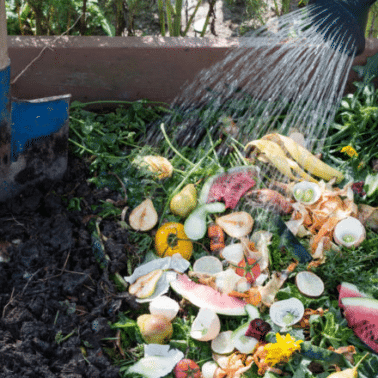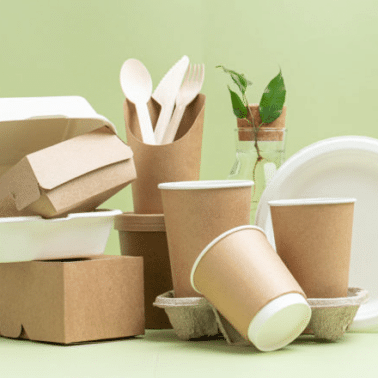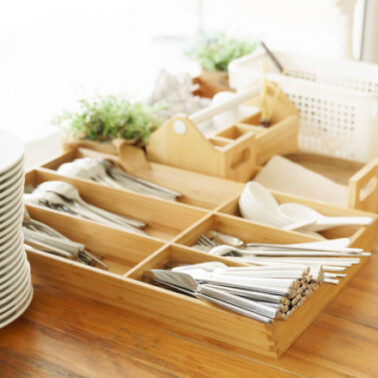Why should we use reusable items?
Anything reusable beats single-use when we’re talking sustainability and auditing our household practices, so let’s dive into the ten best to have in your home! Often, this can seem cost-intensive, but there’s almost always a huge cost savings when we swap to something reusable that will last a lifetime vs. single-use or cheaper items that are almost certainly destined for a landfill not long after we acquire them.

How do I switch to reusable products?
Switching to reusable products (and therefore away from single-use products), is a journey we’re probably all on board for the long term. Step one sounds easy but might take some time and lots of mental work – recognizing what we’re using on a regular basis that is designed for single or short-term use. This can be everything from cheaply made items like clothing (fast fashion is a less than 20 wears model), to true single-use items like takeaway packaging (cups, bags, cutlery, etc.) I’ve been on this road for the last several years and still find things on a regular basis that hit me out of nowhere that we’ve been purchasing that aren’t designed for reuse, or to be repaired. When you come across something in your day-to-day that you realize is made to be sent to a landfill at end of life, and you’re almost out of that thing – think single-use toilet bowl scrubbers, disposable razors, maybe even kid school supplies like dry erase markers, plastic glue sticks, plastic bound spiral notebooks – start the search for a better option, or find something you already own that can take the place of your disposable option.
10 Best Reusable Products
Jars
Jars are just the BEST. What can’t we use them for?? In our house, we reuse jars for homemade broth, leftover storage (perfect for soup!), kids little craft pieces (so many beads!), odds and ends (rubber bands, tacks, pens), smoothies, to-go drinks, homemade dressings, gifting food to neighbors and friends, homemade playdough, bulk food storage (nuts, oats, flours, nut butters, dried fruit, pasta, rice), do I need to go on?!
Safety Razor

The plastic straw issue has been very publicized, but there are other items in our lives designed for single-use (or few use) that we don’t think about as much, and our razors are one of them. Most people use a disposable razor (or a razor with disposable cartridges), and since the cartridges are mixed material (plastic/sharps), they’re almost impossible to recycle. Terracycle has recently started recycling, but the cost is on you to mail in, which most consumers won’t do. A safety razor is a true zero-waste option to shaving. There are many options these days, from a single straight blade to options that look and perform like my old 3-blade with a pivot head. The base of the razor is fully metal, and the blades get replaced (much less frequently for me!) on their own. The blades are only metal and can be collected in a little metal tin and mailed back in batches of 50-100 and fully recycled.
Straws
I hesitate to include this one because it seems like a trendy thing that could not be a good use of funds or energy, BUT if you’re a constant multiple beverage drinker and love to have your big jug of water every day with a straw, then investing in a silicone, bamboo, metal, or glass straw set might be great for you!
To-Go Mug
Many of us are work from home or hybrid right now, but if warm drinks on the go make you happy, then a solid to-go mug is a great choice. I like MIIR or KeepCup (B corps), but there are lots of great options out there. When shopping a thermos or mug, be sure to check that it is either glass or food-grade metal – definitely check the vessel itself AND the lid that hot liquid will pass through. If the lid is plastic, make sure that the company is making it without BPA/BPS.
Water Bottle
I think most of us own a reusable water bottle at this point, but if you don’t, there are lots of reasons to snag one…or just start reusing a glass bottle you may have! Other than the obvious saving of plastic water bottles, some great reasons for BYO water are: the water inside plastic bottles may contain bisphenols that have leached into the water itself (so we can control the water quality), and, of course, we’re made of mostly water, so staying hydrated in general helps with all body functions!
Dryer Balls

An argument here would be that line drying all of our clothes would be the best choice, but since we’re living in a modern world, I’ll assume most readers are using clothes dryers. For fun though, if one household air-dried their clothes for a year, that would be the equivalent of 2,400 pounds of CO2 (driving one car 2701 miles) and about $100 from their electric bill. If drying is a must for you, though, dryer balls made of wool reduce drying time which can save on that carbon footprint and the cost of your bill!
Glass/Stainless Steel Containers
This is another one where health and the planet go hand in hand. I firmly believe in using what we have first, so don’t go toss all your plastic containers with matching lids! Something we can consider though is the health impact of storing certain foods in plastic containers – specifically, placing acidic or hot food into plastic has been linked to harmful compounds leaching into food. In general, I try to store most food in glass and reserve plastic for short-term transporting of food – like to a party or on a road trip – or for dry foods. If your plastic containers are like any I’ve used, they don’t hold up long-term anyway. So, as you lose functionality from your current plastic storage containers from breaking or melting in the dishwasher, that’s a great time to make the swap to a glass food storage! A big bonus is that you can make your foods in glass, bake in the oven, and then store (once cooled of course) in the same container!
Menstrual Products
This includes cloth pads, cups, discs, and periodwear. If you’re new to the leak-proof period underwear game, I’d start with a search of ‘non-toxic periodwear’. Some of the more popular larger brands have been found to have PFAS, a toxic forever chemical in their products, so a safer brand is a must here! If you’re searching for a menstrual cup for the first time, the search can feel overwhelming here too. Here are two quizzes to choose from to help find the right fit for you: PeriodNirvana and PutACupInIt.
Swedish Dish Towel

Raise your hand if paper towels are a staple in your household. Couldn’t imagine a kitchen without them? I had a follower ask me about paper towels, and I think we’re at a point where we use about 1 roll per 6-9 months. Most spills and messes just get cleaned up with regular old dishtowels in our kitchen, so only the yuckiest of yuck gets the paper towel treatment. A Swedish dish towel is a good swap since they’re light and perform like a paper towel but with a bit more heft and are biodegradable (you can compost them at the end of their life). Alternatively, we also just use a ton of regular ol’ towels, washcloths, bar rags, etc.
French Press/Kettle/Coffee Maker (Invest Here!)
The inventor of the K-Cup has been quoted since creating the device and pods saying that he wishes he hadn’t invented it. He didn’t foresee the massive amount of waste and just how far-reaching his product would be. Without counting plastic cups from other coffee devices like Nespresso, the amount of K-Cups used to date could circle the earth 10 times. That’s plastic that won’t break down or be recycled and coffee grounds tossed into a landfill that could otherwise have been composted.
Obviously, this isn’t an exhaustive list, but get creative about reusing around your home! I challenge myself to not ever let something only have one life, and it really does tickle me pink when I find a creative use for something that would have been trash!
Sources:











